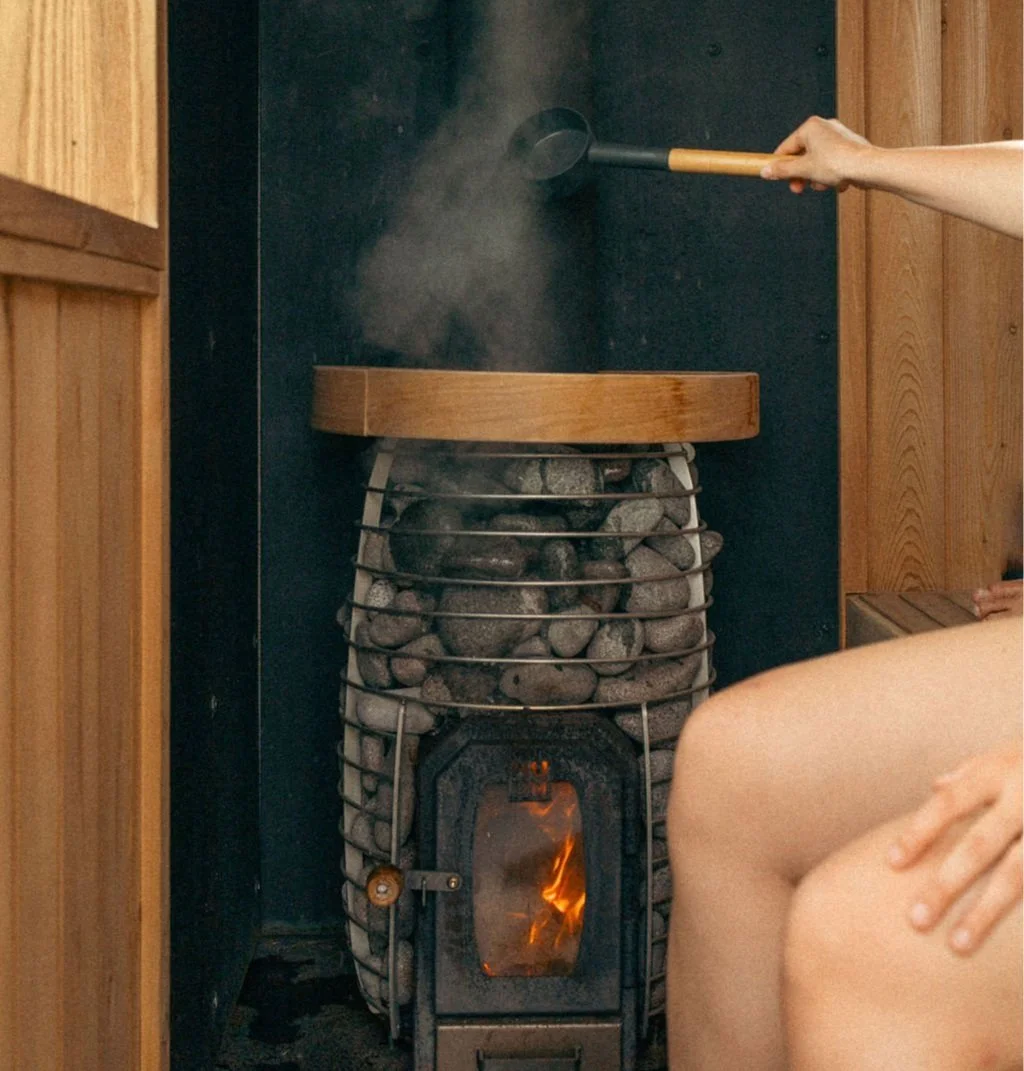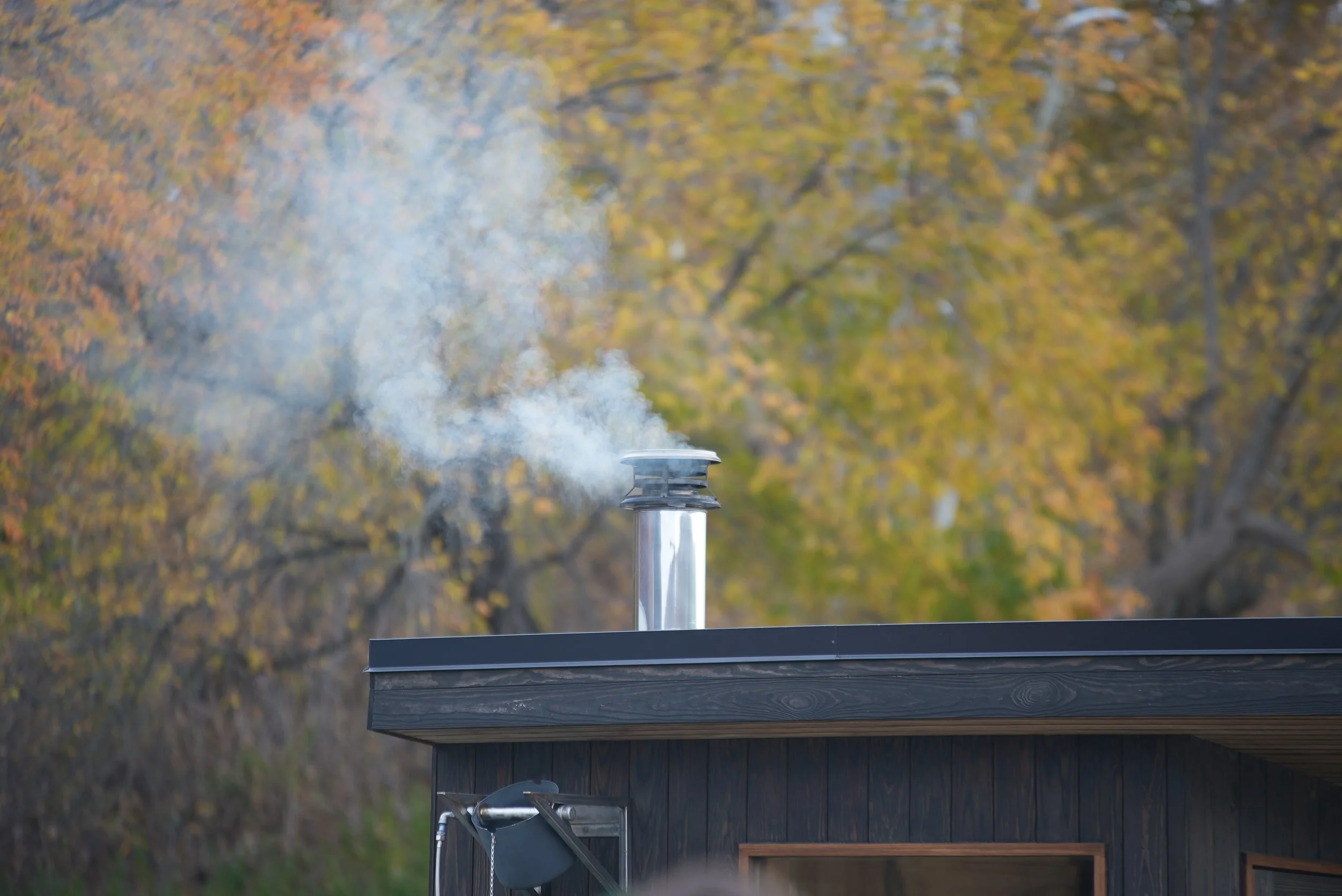Electric Vs. Wood-Burning Sauna Stoves: Which Is Better?
A Guide to Wood-Burning vs. Electric at Takka
It’s a question we hear often—and for good reason.
At Takka, we offer four traditional Finnish saunas: three heated by wood-burning sauna stoves (one located at our Superior location) and one powered by electricity at Takka Portage. Each brings its own kind of warmth to the ritual. One isn't better than the other—they simply offer different rhythms for different lives.
So if you’re wondering which heater fits your sauna dreams, you’re in good company. Whether you're new to sauna culture or returning to a practice you’ve long loved, choosing the right sauna heater is about more than convenience or performance. It's about how you want to feel—before, during, and after you sweat.
This guide walks you through the key differences between wood-burning and electric sauna heaters to help you find what feels right.
The Heart of the Sauna: Understanding The Sauna Heater
The heater is the soul of the sauna. It shapes the pace, ambiance, and atmosphere of each session.
At Takka Saunas, we take great care in choosing our sauna stoves—because how you heat your space matters as much as what happens inside it.
Wood-Burning Sauna Stove
Traditional. Elemental. Unplugged.
There’s something sacred in the simplicity of a wood-burning sauna. No electricity. No screens. Just fire, stones, and time. At Takka, we use seasoned hardwood, for a clean, consistent burn and minimal smoke.
A wood sauna takes patience. You’ll feel the ritual in each moment: the quiet act of lighting the fire, the scent of wood smoke curling through the air, the soft pop of logs settling into coals. The heat rises slowly, penetrating deeply—radiant, full-bodied, and alive.
For many, the wood-burning sauna stove is about more than temperature. It’s about rhythm. Presence. A return to the elemental.
Electric Sauna Heater
Effortless. Quiet. Reliable.
In contrast, our electric sauna heater brings modern convenience to the traditional Finnish ritual. With the push of a button, the sauna begins to warm—no firewood needed, no flame to tend. The heat is consistent, predictable, and ready when you are.
Even though it’s powered by electricity, our electric sauna is built in the Finnish tradition. Water poured onto the hot stones creates steam, just like in a wood-burning setup. You don’t lose the essence—we simply streamline the process.
For those who value simplicity, efficiency, and precise control, electric sauna heaters offer a beautiful balance.
Comparing Sauna Heater Types: Wood vs. Electric
Let’s take a closer look at what sets these two styles apart—and where they overlap.
Ambiance & Sensory Experience
Wood-Burning Sauna Stoves:
Rich with scent and sound. You’ll smell the sauna wood as it burns, hear the fire crackle, and feel the flicker of flame in the quiet. The experience is grounding and deeply immersive.Electric Sauna Heaters:
Clean and quiet. No fire to stoke. No ash to manage. The atmosphere is still warm and welcoming, but with a more minimalist, modern calm. As for sound? You still get the sizzle and pop of water on the hot rocks after a pour, but otherwise it’s soothingly silent.
Heat Quality & Temperature Control
Wood-Burning:
The heat feels radiant, almost alive. It ebbs and flows naturally as the fire burns. It can feel warmer, even if the thermometer reads the same.Electric Sauna:
Heats evenly and holds temperature with little fluctuation. If you like things steady and straightforward, electric sauna heaters excel here.
Time to Heat
Electric:
Quicker to reach your desired temperature—often in 30–45 minutes. Great for spontaneous sessions or a daily routine.Wood Sauna Stove:
Requires a longer lead time—usually an hour or more. It’s a slower start, but for many, the process itself is part of the reward.
Maintenance & Upkeep
Electric Sauna Heater:
Typically easier to care for—just an occasional check on components.Wood-Burning:
Involves ash removal and regular cleaning. But here at Takka, we take care of all of the firewood, lighting, and tending. All you need to do is show up!
What They Share: Core Sauna Elements
Whether you choose flame or filament, both sauna types at Takka deliver the essentials of an authentic Finnish sauna experience:
Steam-ready rocks for löyly
Deep, full-body warmth
A sacred space to reset
Connection to nature—and to self
That breath of cold air after a good sweat
Common Questions We Hear
Q: What kind of wood do you use in your wood-burning saunas?
We use seasoned hardwood—mostly birch and maple. It burns hot and clean, giving off minimal smoke and a gentle, earthy scent.
Q: Can I pour water on the rocks in the Takka electric sauna?
Yes, absolutely. Our Takka electric sauna setup is built for löyly (steam), just like our wood-burning ones. Pour gently and enjoy. However, keep in mind that not all electric saunas have this capability.
Q: How much electricity does an electric sauna use?
Most electric sauna heaters use 6–8 kilowatts per hour. For a typical session, that’s about the same as running a home oven—efficient for the deep comfort they provide.
Q: What brands of sauna heaters do you use?
We use IKI and HUUM, two European leaders in sauna stove design. These heaters blend craftsmanship with tradition, bringing you authentic heat and timeless performance — whether wood-burning or electric.
Q: Who built the Takka saunas?
Our friends at Cedar and Stone in nearby Duluth, Minnesota built our 3 Takka Portage saunas, and advised on our Takka Superior sauna, which we built ourselves.
Still Deciding? You Don’t Have to Choose.
One of the best parts of visiting Takka is that you’re welcome to try them all.
Each of our saunas offers a distinct experience. Some guests are drawn to the grounding ritual of the wood-burning sauna — the crackle of the fire, the warmth pulling them into the present moment. Others are soothed by the quiet hum and consistent heat of the electric sauna, a calm companion for early mornings or brief, restorative sessions.
Whatever your preference, the door is open.
Come and see which one speaks to you. Feel the difference. Let your breath guide the way!
Because sauna isn’t just a place to warm up—it’s a place to return to yourself.
Sauna. Rinse. Repeat.







